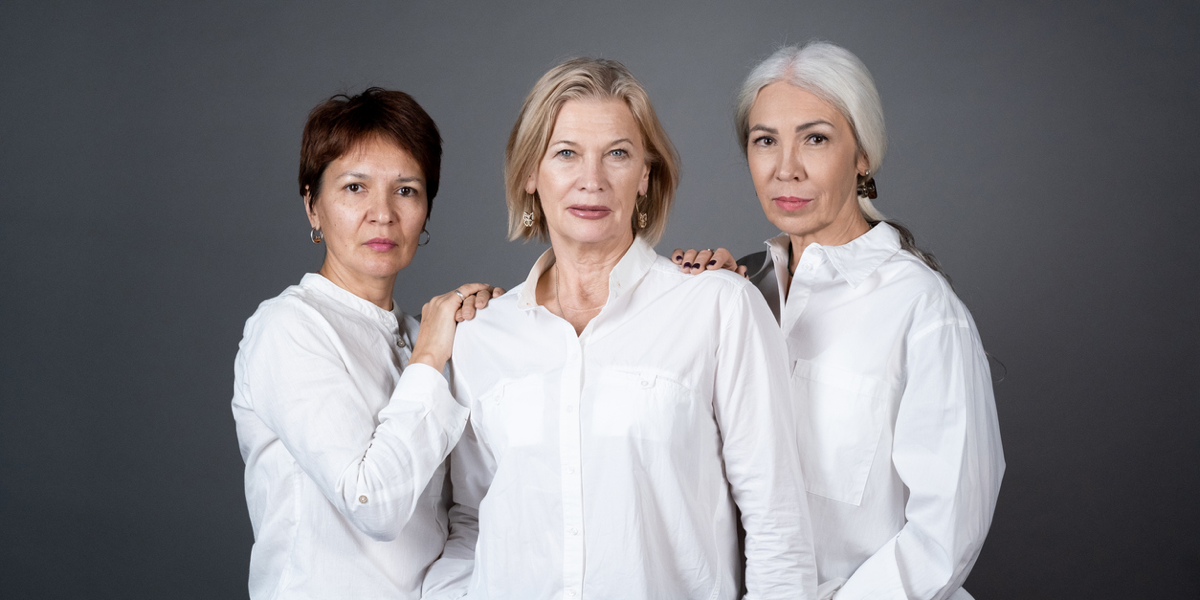It is very clear that there is diversity in the IC patient population. Hunner’s lesion disease, genitourinary syndrome of menopause, pelvic floor dysfunction, pudendal neuralgia, central sensitization and chronic infection do not have the same anatomy nor treatments. But, with the exception of Dr. Christopher Payne’s five point system (1), there has been little discussion about these potential subtypes other than “bladder centric” and “beyond bladder” patient groups(2). That’s now changing with a new study that also identifies clear and distinct patient subgroups.
UCLA Study Suggests Three Patient Groups
Patricia Mwesigwa and colleagues at UCLA described the issue perfectly:
We hypothesize that the current definition of IC/BPS, requiring only the perception of bladder discomfort and co-existing urinary symptoms, encompasses multiple, mechanistically distinct disease phenotypes. Progress in clinical care and management of IC/BPS requires refinement of our diagnostic and prognostic schema by identifying independent biologies or data that can be used to define each phenotype more objectively to correlate with pathogenesis and treatment outcomes.(1)
Their study of 521 women sought to define unique pelvic pain phenotypes through clinical profiling and the patients response to treatment. The IC/BPS cohort included 145 patients whose charts were reviewed for symptoms, treatments provided and their response to these therapies.
Bladder Pain Syndrome Group
Group 1 had 56 patients and reported bladder pain that was aggravated as the bladder filled with urine and was relieved after emptying. This group had the most dietary triggers such as acidic foods and caffeine. They were designated as the BPS group.
Non-urologic Pelvic Pain Group
Group 2 consisted of 31 patients who had higher levels of pain in urethra and the entrance to the vagina and struggled with painful sex and painful urination. They had persistent pelvic pain that was unrelated to bladder filling or emptying that they believed was non-urologic pelvic pain (NUPP), aka pain outside of the bladder.
Myofascial Pain Group
Group 3 had 58 patients with nearly identical pain levels, urinary symptoms, severity and quality of life as the BPS group. But, they had more symptoms related to the bowel, had frequent sensations as incomplete bladder emptying and small amounts of urine leakage, usually without any awareness. These patients also reported more pressure, heaviness and straining to have a bowel movement. They had the most bothersome symptoms of all three groups with demonstrated pain and/or trigger points on pelvic exam, specifically when touching the levator muscles and hip flexors. This group was designed the myofascial pain group (MFP).
Treatments Different Within Groups
The UCLA team hypothesized that each of the three groups would respond differently to therapies and their data supports this. The BPS group responded best to bladder therapies, particularly intravesical instillations and bladder analgesics. Patients in the NUPP group showed low response to all bladder therapies, suggesting that their condition lays beyond the bladder. Patients with myofascial pain responded well to pelvic floor physical therapy with almost 80% experiencing successful results.
Conclusion
It’s wonderful to see a growing acceptances that IC is not an incurable bladder disease in every patient but rather a complex, variable pelvic pain syndrome that requires a much more extensive diagnostic workup and individualized treatment plans.
The UCLA data provides an independent validation for portions of Payne’s system. UCLA did not differentiate between Hunner’s lesions disease vs. bladder wall dysfunction (i.e. chemocystitis, genitourinary syndrome of menopause, chronic UTI) though they suggest that this should be considered in future studies. Payne and most IC researchers in the world believe that Hunner’s lesions represent a unique disease that requires lesion specific therapy.
The UCLA team and Payne agree that the myofascial group has almost identical symptoms to the BPS group with the addition of pressure, heaviness and great discomfort when the muscles are examined Treatment with pelvic floor physical therapy was the most effective for this group.
UCLA apparently did not consider the role of pudendal neuralgia as a clear subgroup of patients who demonstrate nerve driven symptoms, such as: tingling, numbness, pins and needles and/or PGAD. Both Payne and Dr. Jerome Weiss (in his book Breaking Through Chronic Pelvic Pain) urge a neurological workup and treatments that calm the nerves down.
What makes Payne’s phenotyping system so effective clinically is his discussion of central sensitization & chronic overlapping pain conditions which identifies the central nervous system as the underlying problem in patients who struggle with multiple pain conditions (IC, IBS, vulvodynia, fibromyalgia, migraines, TMJ and others).
I’m intrigued by the UCLA NUPP group which includes more patients with urethra and vaginal pain. Could this relate to an abnormal hormone influence or perhaps the consideration of other gynecological causes. such as: pelvic congestion syndrome, fibroid tumors or endometriosis?
The journey for knowledge continues and it is gratifying to see yet more discussions about possible phenotypes and subtypes.
References:
(1) Payne C. A New Approach To Urologic Chronic Pelvic Pain Syndromes: Applying Oncologic Principles To ‘Benign’ Conditions. Current Bladder Dysfunct Rep. Topical Collection on Pelvic Pain. March 2015
(2) Akiyama Y, et al. Phenotyping of interstitial cystitis/bladder pain syndrome. Int J Urol. 2019 Jun;26 Suppl 1:17-19
(3) Mwesignwa P, et al. Unsupervised machine learning approaches reveal distinct phenotypes of perceived bladder pain: A pilot study. Front Pain Res (Lausanne) 2021. Nov;2 STu

